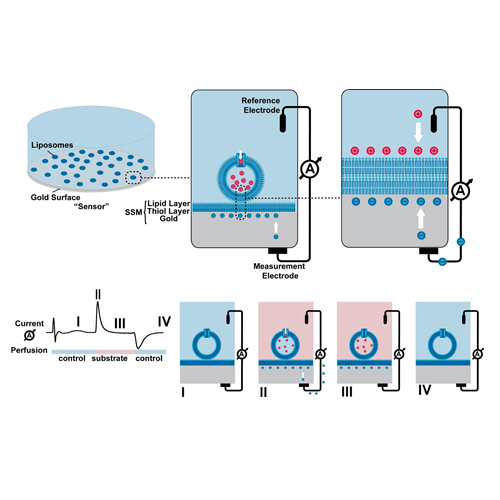Electrophysiological characterization of the archaeal transporter NCX_Mj using solid supported membrane technology
30-May-2016
J. Gen. Physiol., Vol. 147, No. 6, 485–496, www.jgp.org/cgi/doi/10.1085/jgp.201611587
J. Gen. Physiol., online article
Sodium–calcium exchangers (NCXs) are membrane transporters that play an important role in Ca2+ homeostasis and Ca2+ signaling. The recent crystal structure of NCX_Mj, a member of the NCX family from the archaebacterium Methanococcus jannaschii, provided insight into the atomistic details of sodium–calcium exchange. Here, we extend these findings by providing detailed functional data on purified NCX_Mj using solid supported membrane (SSM)–based electrophysiology, a powerful but unexploited tool for functional studies of electrogenic transporter proteins. We show that NCX_Mj is highly selective for Na+, whereas Ca2+ can be replaced by Mg2+ and Sr2+ and that NCX_Mj can be inhibited by divalent ions, particularly Cd2+. By directly comparing the apparent affinities of Na+ and Ca2+ for NCX_Mj with those for human NCX1, we show excellent agreement, indicating a strong functional similarity between NCX_Mj and its eukaryotic isoforms. We also provide detailed instructions to facilitate the adaption of this method to other electrogenic transporter proteins. Our findings demonstrate that NCX_Mj can serve as a model for the NCX family and highlight several possible applications for SSM-based electrophysiology.











